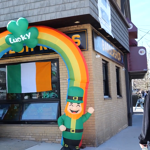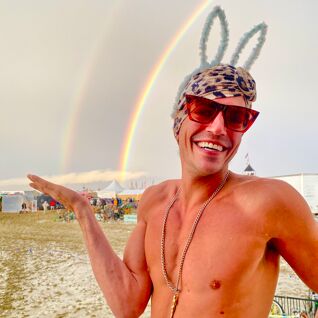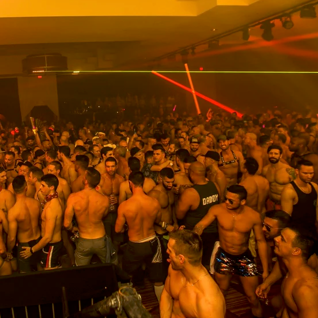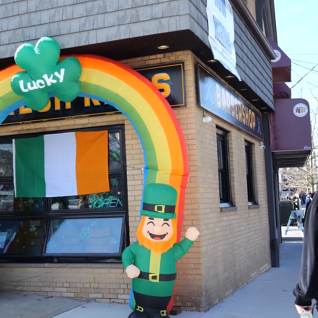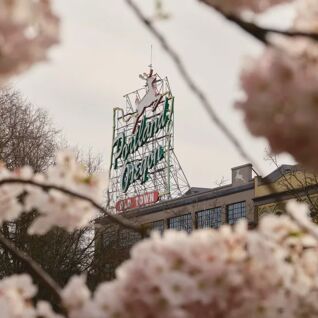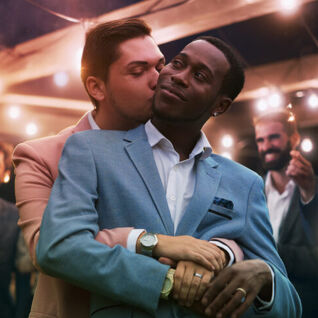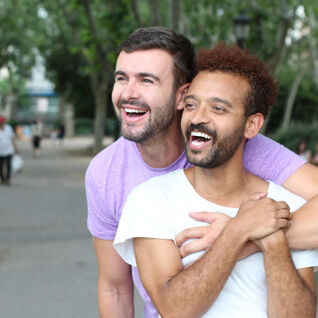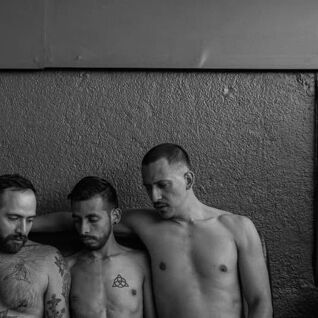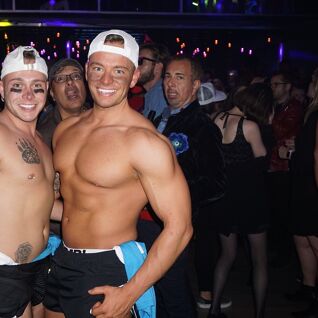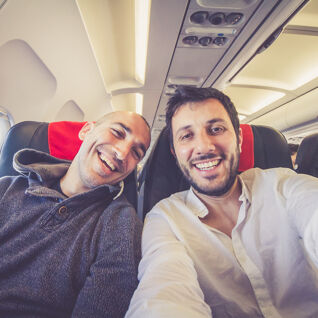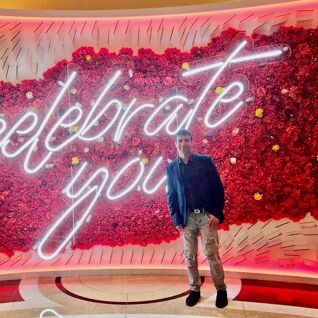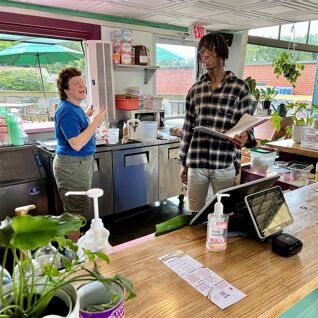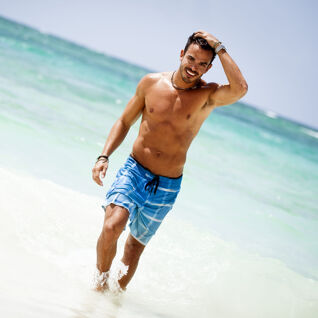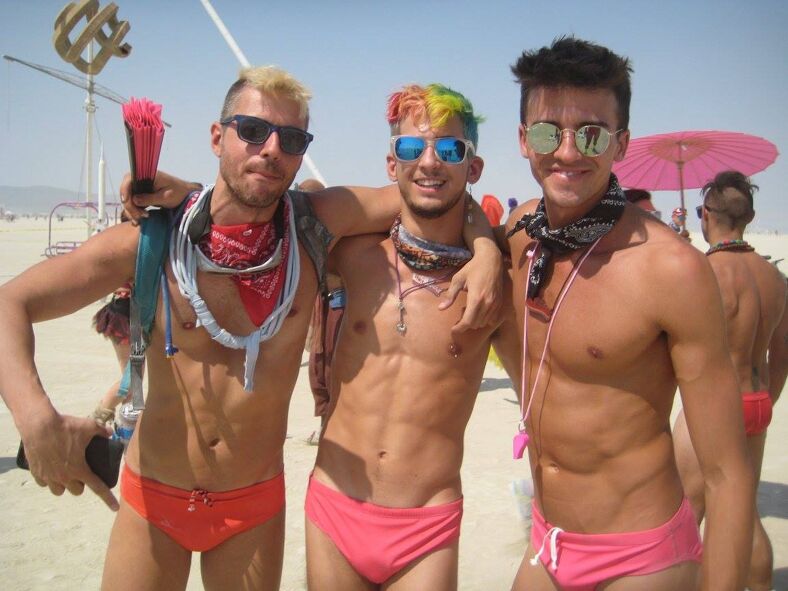
For generations, queer communities have found sanctuary by creating their own urban enclaves: The Castro, Chelsea, West Hollywood, and even Burning Man’s Black Rock City.
This ephemeral city encompasses 4 square miles of Nevada’s Black Rock Desert. Often stereotyped by uninitiated outsiders as a bacchanalia of sex, drugs, and EDM, the identity of the Burn runs far deeper.
At its core, Burning Man is a chimera of artistic, societal, and civic experimentation housed in a city that rises from the dust every August, and then disappears without a trace by the end of the week. Think of it as a sun-baked Brigadoon.
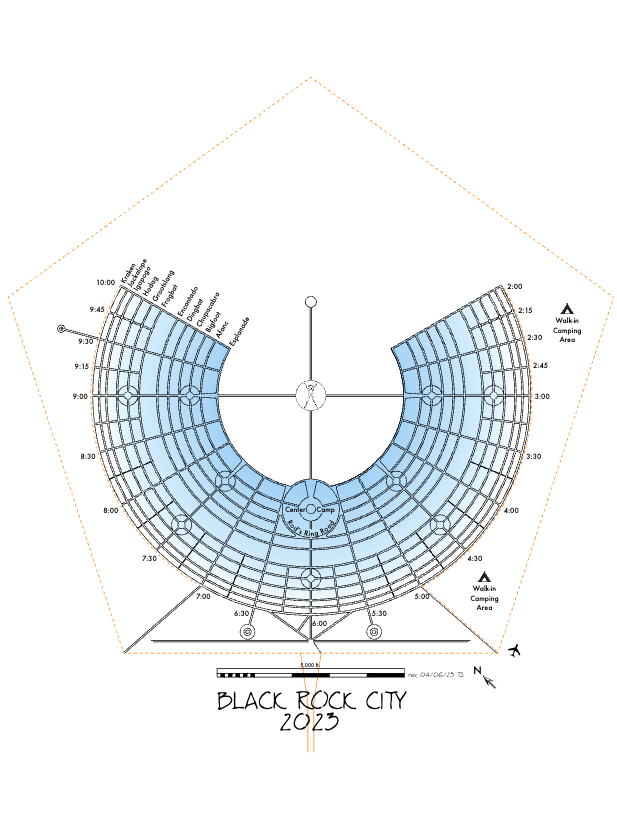
“Burning Man is basically a temporary city of 80,000 people,” explained Jay Michel, a veteran Burner. “And just like any city, it has tons of different things happening, from yoga to the arts to dance parties.”
The map of BRC is modeled after a clock. Sectors 2 through 10 house the myriad camps that populate the Burn. The rest of the space is filled by the Playa, an expansive dust-scape showcasing a cavalcade of nigh-inconceivable sites: mechanical octopi spewing flames, Tyco DJ-ing atop a Dusty Rhino art car, loincloth-clad denizens scaling metallic structures spelling out the word LOVE.
At the center of this pandemonium looms The Man, a gigantic effigy designed to reflect the theme of each year’s festivities.
Interestingly, both The Man and the festival itself trace roots back to another iconoclastic city – San Francisco.
“It started out as a bunch of people basically just hanging out on Baker Beach in San Francisco and burning an effigy of a man one Labor Day weekend,” explained Russ Smith, an SF-based Burner. At Burning Man, Russ goes by his Playa name Papa Bunny. Assuming a unique nom-de-Burn is a long-running tradition at BRC. (To explain it in X-Men, it’s like how Ororo Monroe identifies by the name Storm.)
“It got too big and San Francisco had a problem with it,” Papa Bunny continued. “They needed to find someplace else. And they ended up in the Nevada desert, which was really crazy and was like people shooting guns, fireworks, and all kinds of other things on federally protected land. Then it became more organized, and now it’s a city.”
Related:
Burning Man’s gayborhood
And just like nearly every major city, BRC features its own gayborhood, located in the 7:30 sector. Historically, queer enclaves originated out of LGBTQ peoples’ need for community, as well as security, which permeates into Burning Man.
“Homophobia does exist,” Papa Bunny admitted. In the past, he had been called a “faggot” by a straight Burner. And this anti-queer hostility has been directed towards Camp Beaverton and Camp Gender Blender, prominent camps catering to lesbians and trans people, respectively.
“One year, the Gender Blenders and Camp Beaverton were actually placed beside a camp that was a bunch of tech Bros,” Papa Bunny continued, “and the tech bros erected a structure specifically to not to have to look at what was happening next door because it didn’t work in their mental ethos, whatever it was.” He clarified, “That said, in the grand scheme of things, Black Rock City is actually a ridiculously safe place.”
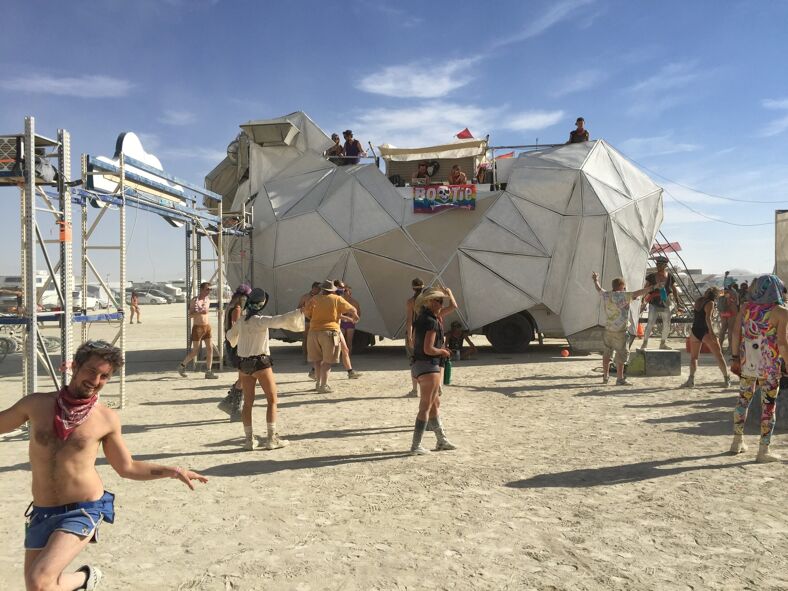
BRC’s 7:30 sector houses the bulk of Burning Man’s queer community, including Jay’s camp FruitPop. (Like Papa Bunny, Jay also identifies by his Playa name Bromance.)
“We are a day camp,” Bromance explained. “We’re open every day. So part of our whole idea is we want to be a refreshing, fruity stop in the Playa with pop art and pop music as a guiding principle for us. So every day we basically give away something that’s a play on fruit or pop or a mix of both. So we do things like fresh fruit earlier in the week and Pop Rocks later in the week. We throw two parties. This year, the first party is a tighty-whities disco party. We’re giving away tighty whities, then people decorate them. And then the second party we’re doing is called Pop Tart. It’s a qay diva party where we’ll give away Pop Tarts.”
These parties are FruitPop’s gifts to their fellow Burners. Gifting is one of the 10 Principles that serve as guidelines for Burning Man. (The others being, in no particular order, Radical Self Expression, Radical Self Reliance, Radical Inclusion, Participation, Civic Responsibility, Communal Effort, Decommodification, Leave No Trace, and Immediacy.) This tradition of gifting is exemplified by the various queer camps of BRC’s gayborhood.
For example, the Glamcocks, arguably one of the most prominent LGBTQ+ camps on Playa, gift a series of Animal-themed nightlife parties. This year, they are hosting “Catpoclypse Meow,” a feline-futurism fete, and “E-I-E-I Glow,” a neon-lit barnyard critter blowout. Down the block, Comfort and Joy gifts a harem-esque orgy tent, while The Down Low Club offers a similar hook-up environment with an emphasis on anonymity. (As their motto goes, “What happens at Burning Man, stays at Burning Man…”) Camp Fur provides a clubhouse for BRC’s furry community. And Celestial Bodies functions as the gayborhood’s bar, sort of like Cheers for queers.
The success of these and other LGBTQ camps led to Burning Man Org, which oversees BRC, deciding to space them out to other sectors, in the hopes they would similarly gentrify those as well.
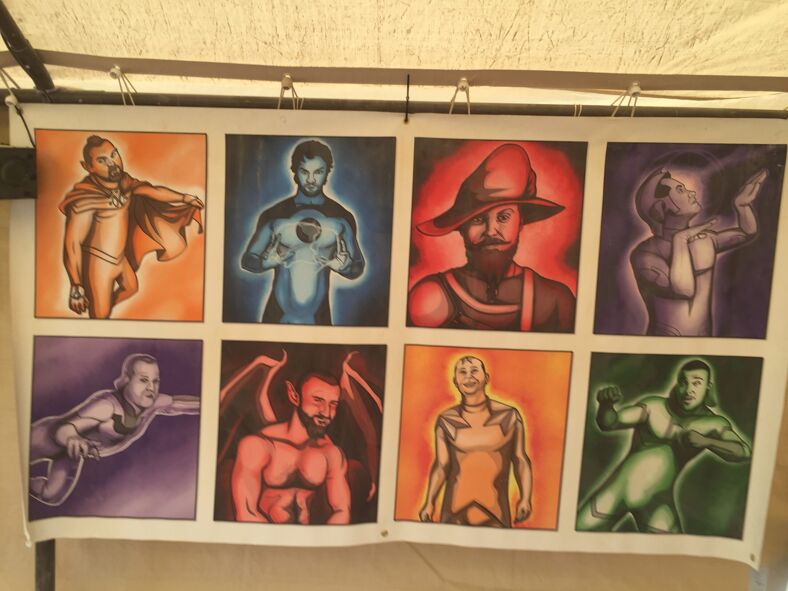
“The AstroPups, Glamcocks, and a number of San Francisco queer camps actually met with Burning Man Org years ago to discuss this situation, where more camps requested to be in the 7:30 sector than the other three sectors combined,” said Papa Bunny, who leads the AstroPups, a long-tenured camp comprised of pup players. “And what I loved about that conversation was they didn’t say, ‘how can we stop this?’ They said, ‘how can we replicate this to the other three sectors because whatever it is you’re doing, you must be doing it right. Everybody wants to be with you.'”
The following year, AstroPups and several other queer camps were placed in the 4:30 sector. The existence of dual gayborhoods is common in many major cities, with the westside leaning more mainstream and the eastside embracing a grittier, kinkier culture. This notion extends into BRC as well. The 4:30 sector is now home to The AstroPups, where their clan of daddy bears provide public shower events for filthy Burner Boys. By dividing the gayborhood into two locations, Burning Man has extended the benefits of the queer community across BRC, without sacrificing the safety it provides.
Then, after this week of revelry, these showers, art cars, and dust-stained tighty-whities are packed up, leaving no trace they ever existed at all. And the various muscle boys, pups, and furries return to their home gayborhoods of WeHo and the Castro while Black Rock City dissipates into the ether. The desert succumbs to a 51-week disco nap until the Playa pulls it together for the next Burn.
All photos courtesy of Mike Ciriaco for GayCities.
Pack your bags, we’re going on an adventure
Subscribe to our weekly newsletter for the best LGBTQ+ travel guides, stories, and more.




